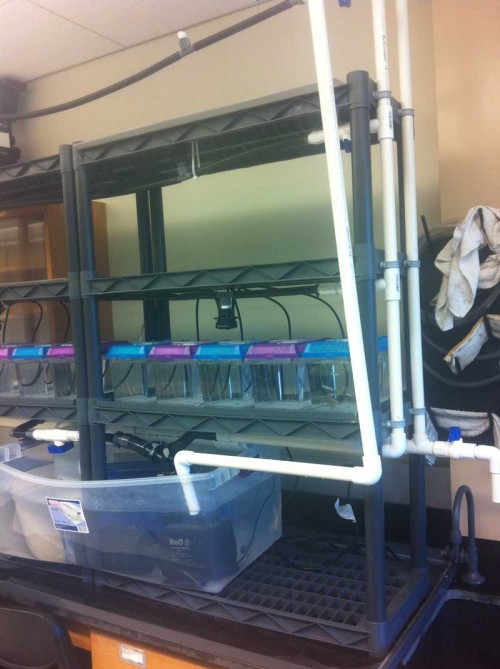We’re off to a slow start in my brand new course, largely because I’m in the awkward phase of trying to catch everyone up on the basics before we plunge into the deeper waters, but also because the 8am scheduling is not good for inspiring interaction. Maybe it wasn’t the best decision to begin with a crash course in introductory concepts in developmental biology, because it’s encouraging the students to think that I’m going to do nothing but pour knowledge into their brains, but I’m at a loss to know how to get right into the primary literature without making sure they’re comfortable with the terminology and ideas of the discipline first.
The theme of the first week really was fundamental: polarity. How does a single-celled zygote figure out which end goes up? The students had to read a few chapters from the Gilbert developmental biology text (which is free online, at least in the 6th edition, which is good enough for a quick summary), specifically the chapter on anterior/posterior polarity (which is almost entirely about Drosophila, I added a fair number of examples from Ciona and echinoderms), and the chapter on the organizer in amphibians. That covered a good range, from an organism in which the orientation is pre-specified by maternal RNA (flies) to a case where it’s determined by an environmental interaction — the sperm entry point followed by a cortical rotation reaction (frogs). I also added a bit about mammals, where the decision by the blastula cells to form inner cell mass vs. extra-embryonic membranes is basically a chance event, biased by location in the cluster of early cells.
In all of the examples, though, the key point is that the decisions are not determined exclusively genetically, whatever that would mean, but are contingent on interactions between genes and cytoplasm, which also has structure and pattern, and that that structure may also be influenced by the external environment.
It was fun and familiar to me, but again I’m concerned that when I do most of the work, I’m encouraging passivity in the students. That role is continuing this week, when I give them the stories of neural tube and limb development, as examples of later organ systems that rely on complex interactions. The third week, though, I completely turn the tables on them: they’ve got some reading assignments for that week, and have to do short presentations in class. I’m just going to sit back and ask questions, and hope I don’t get bleary-eyed silence in response.
In my notes for what to do next time I teach this course:
-
Lobby for a better course time. 8am is too damn early for young men and women, even if it is just fine for us oldsters who don’t sleep as much and get up early anyway.
-
This section is a prime candidate for a flipped classroom approach — I could make some short videos ahead of time that they need to watch in their homes, with an accompanying set of questions that they’ll have to discuss in class. The problem there is that in-class responsiveness is one of their weaknesses right now.
-
Later in the course we’ll be trying some different pedagogical approaches: watch for what works best with this group, and maybe revise our crash course section to use that.







